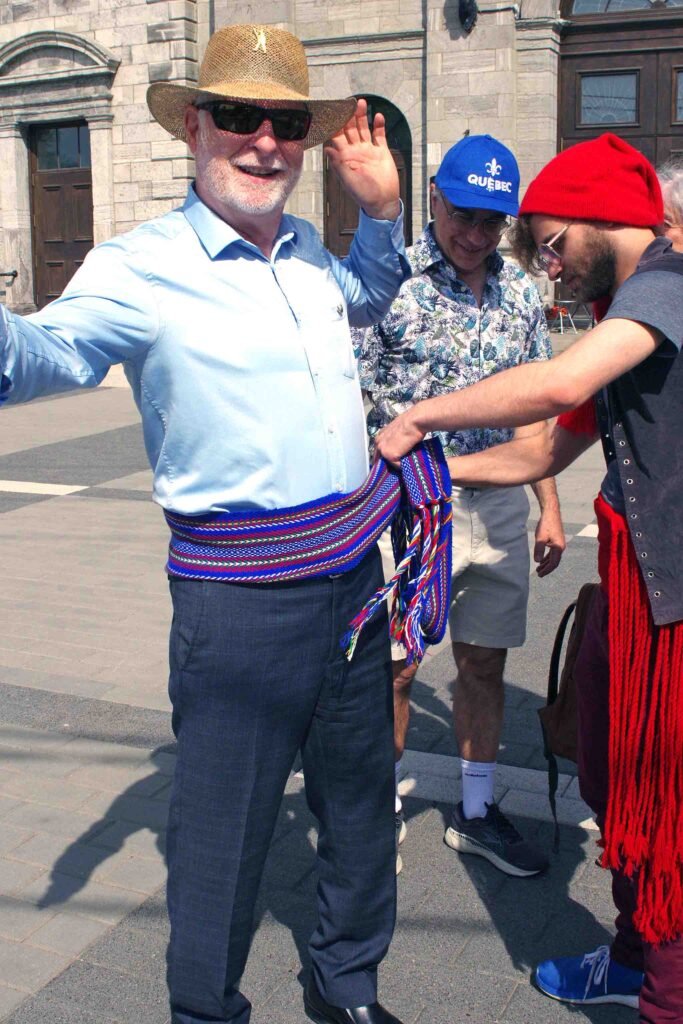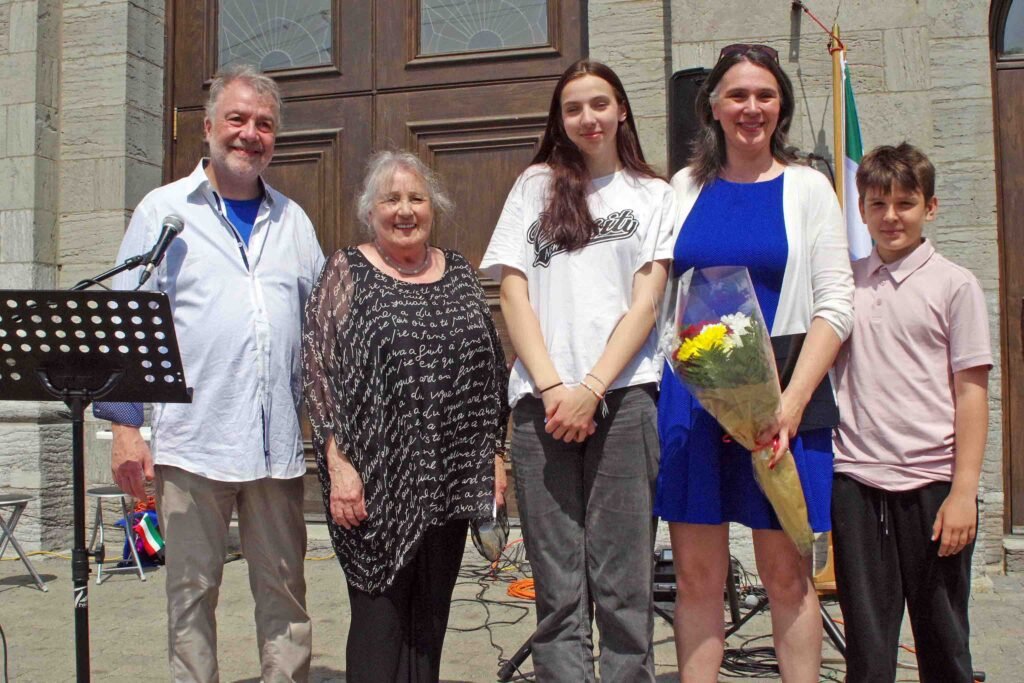
History buffs and nationalists gathered in Sainte-Rose for Journée des Patriotes
Three years after leaving municipal politics, former Laval mayor Marc Demers was back in the spotlight earlier this month when the Laval chapter of the Société nationale du Québec presented him with the Médaille du Patriote in recognition of his promotion of the language, culture, heritage and history of Québec
The presentation took place on the front steps of Église Sainte-Rose-de-Lima in Laval’s historic Sainte-Rose district on May 20, the Journée nationale des Patriotes (National Patriots’ Day).
Uprising of ‘Patriotes’
Once a distinct village with its own municipal status before the 1965 mergers that created the City of Laval, Sainte-Rose was one of the places in early 19th century Lower Canada (nearby Sainte-Eustache being another) where the Lower Canada Rebellion received significant support from “patriotes” who decided to rise against the British colonial-era government.
While some visitors to Sainte-Rose occasionally mistake some of Sainte-Rose’s distinctive street names (such as boulevard Je-Me-Souviens and Rue des Patriotes) as evidence of active Quebec political nationalism in the area, they are in fact an homage to Sainte-Rose’s historic role in the Lower Canada Rebellion – which remains a source of great pride for many of the local residents.

Sabotage in Sainte-Rose
According to an account of the role played by rebel sympathizers in Sainte-Rose around the beginning of the uprising in November 1837, they didn’t take up arms. Rather, they did their bit by sabotaging a bridge (the Pont Porteous) between Sainte-Rose and the North Shore, to slow the advance of British soldiers who were on their way to quell the armed insurrection that was underway in Saint Eustache.
In addition to the medallion presented to Demers (a former longtime Laval Police Dept. investigator), a plaque was presented to Annie Desrochers, host of the Radio-Canada’s afternoon FM broadcast, Le 15-18, which airs Monday to Friday from 3 to 6 pm, in recognition of her valuable contributions to the community. She recounted how she grew up in Sainte-Rose, taking part in local events and attending École Latour in the heart of Sainte-Rose.
Tri-color Patriots’ banner
Past recipients of medallions and other honours awarded by the Laval chapter of the Société nationale du Québec have included Jean-François Payette (2019), Madeleine Dalphond-Guiral (2021), Claude Tousignant (2022), Maud Debien (and Léon Debien posthumously) (2023), and Alberto Georgian Mihut (2023).
The presentation took place on the front steps of Église Sainte-Rose-de-Lima


During the ceremony, it was pointed out that the tri-color flag of the Rebellion, which was also used by the Parti patriote (also called Parti canadien), contains bars of green (for the Irish), white (the French) and red (signifying English and Scottish support).
The Parti patriote was founded by expatriate American James Stuart and Louis-Joseph Papineau, a leading figure in the Patriote movement before the Lower Canada Rebellion.



